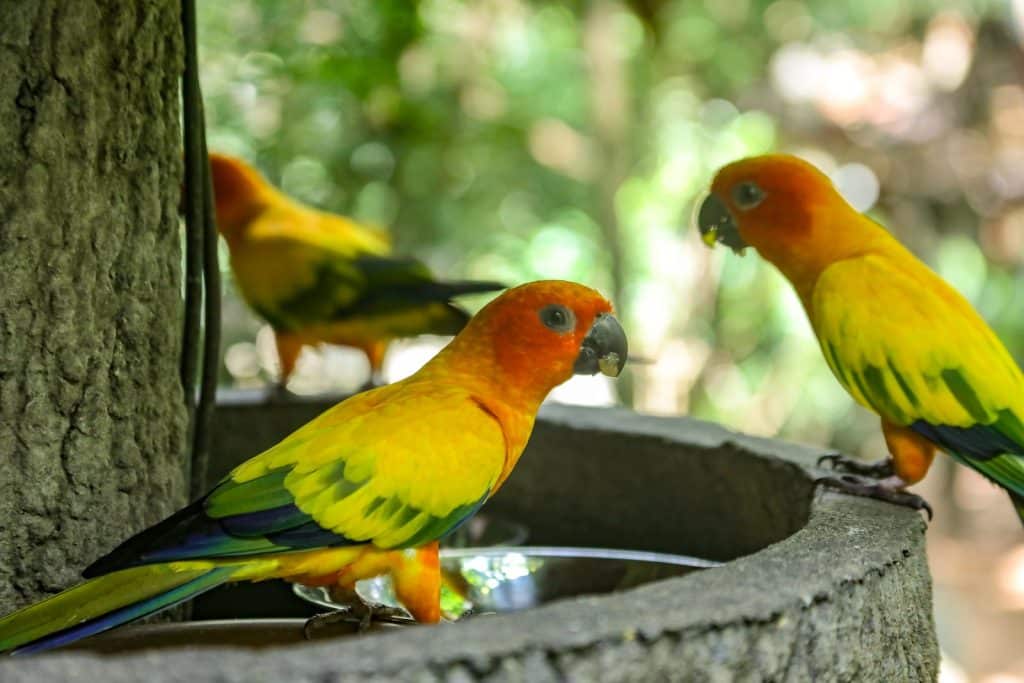
Because they are so cuddly and adorable, lovebirds make great pets. These “pocket parrots”, which are small, colorful additions to any family, are easy to care for and can be a great choice for beginners.
Globally, there are 9 species of lovebirds. Some of these species can be kept as pets, but not all. These three species are the most loved and beloved companions.
Habitat and history of lovebirds
We have identified all the African lovebird species. In the wild, lovebirds live in small groups. They all belong to the Agapornis Family and are closely related.
Only three species of lovebirds are kept in captivity. These are the Rosy-Faced Lovebird and Fischer’s Lovebird. Many lovebird species share two or more common names which make it easier to refer them to their scientific names when in conversation.

Some lovebird species are becoming endangered in the wild. These are the Nyasa, Fischer’s, and Black Cheeked Lovebirds. Although they are not yet on the endangered species lists, all of them fall under the “threatened”, and “vulnerable,” categories.
These birds thrive in captivity. Because they are active and fun, they are a popular choice for pets. They are curious and playful, and they can be social and playful all the time. They are affectionate birds and often form strong bonds with their owners.
1. Rose-Faced Lovebird or Peach-Faced Lovebird (Agapornis rosicollis).
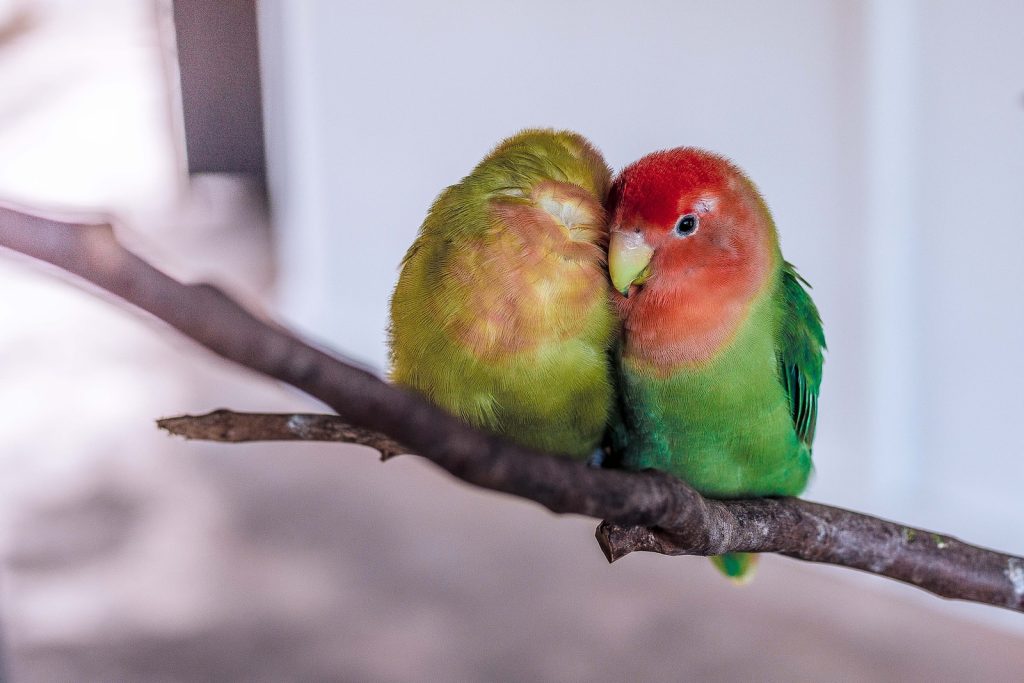
The most popular lovebird species to keep as pets is the rose-colored or peach-faced lovebird. When we think about a lovebird, their beautiful plumage is what we see. Although they are easy to care for, they can be aggressive at times. When you first start to interact with them, it is important to be cautious.
Appearance
This is how lovebirds are often described. Their throats and faces are rosy pink. They have darker orange or reddish-brown hair that is visible above their eyes and on the forehead.
Their plumage is dark green across their entire body, with fading to a black rump. Their legs and feet are gray. These birds are often dark brown or black with a horn-colored, horn-colored beak.
Habitat
The Rosy-Faced Lovebird can be found in dry areas of Southwest Africa. They don’t mind living in any environment and can be found in open areas, forests, mountains, and even semi-desert areas near water sources.
Size
This lovebird species are adorable and small. They measure approximately 7-8 inches in length from head to tail tip and weigh less than 2 ounces.
2. Black-Masked and Yellow-Collared Lovebirds, Agapornis personata
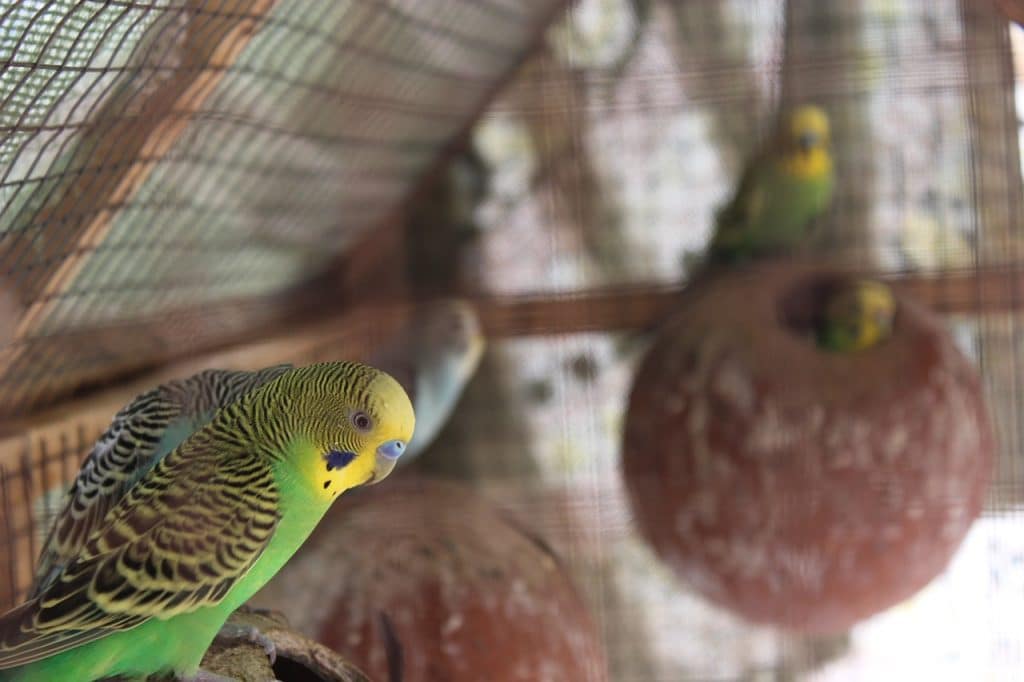
Because there isn’t much agreement about which feature of this lovebird is more prominent, they have two common names. These lovebirds are another popular species, and they are easier to keep than Rosy-Faced Lovebirds.
Appearance
These birds look like a mask from the top. Their black eyes or deep brown eyes have white rings that highlight the mask feature. Their bright, standout red beaks make them shine.
A collar of bright yellow fades quickly to a green and is hidden beneath all this. Sometimes, their tails or wings can be blue. Their feet and legs have grey stripes.
Habitat
The Black-Masked Lovebird doesn’t have as many species as the Rosy-Faced Lovebird. They are only found in the northeastern part of Tanzania. Their subspecies have been successfully introduced to Kenya and Burundi.
Size
This species has slightly more males than females. The birds won’t weigh more than 1.75 ounces. They are also smaller than Rosy-Faced Lovebirds. Their maximum length is 2.3 inches.
3. Fischer’s Lovebirds (Agapornis fischeri)
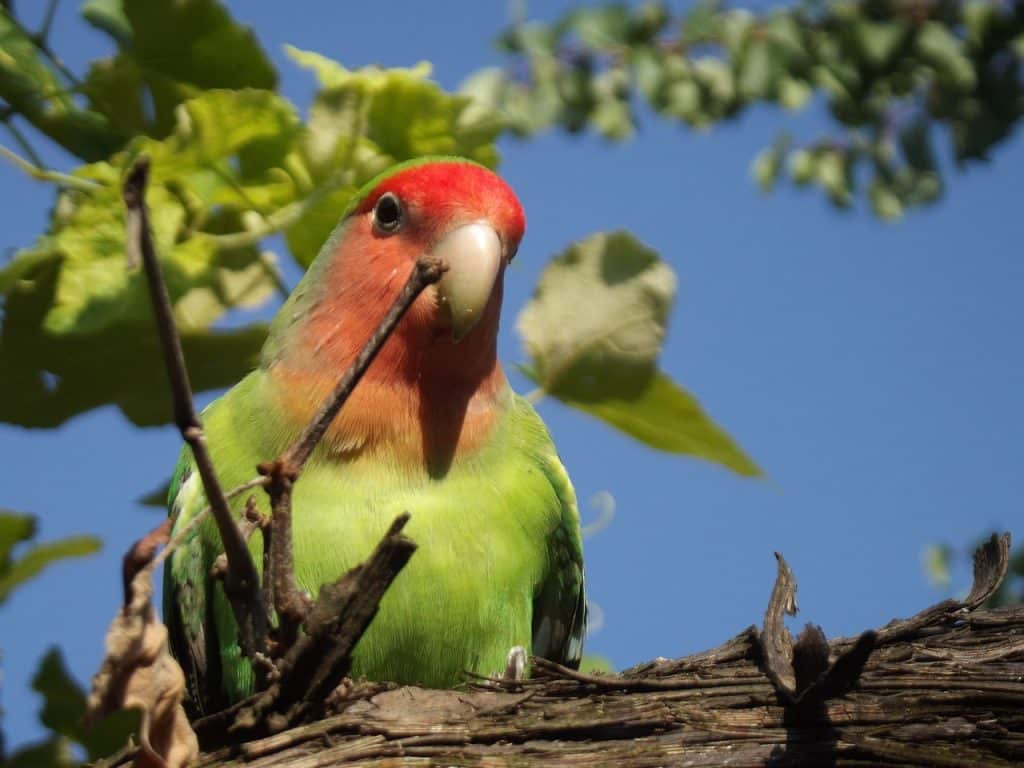
Fischer’s Lovebirds are one of the most common species of pet birds, but their bright and varied plumage makes them stand out. Although they are very playful, they are also quieter than most lovebird or parrot species. They are social, energetic, and can bond well.
Appearance
The Fischer’s Lovebird has a vibrant green-blue plumage, with subtle color variations across their chest, wings, and back. The color gradually turns brown and orange on their heads and necks and fades to a golden yellow at the ends. Their eyes have rings of white and dark orange beaks.
Habitat
These birds can only be found in Africa’s small area along Lake Victoria’s southern border in Tanzania. Some of these birds have migrated to Rwanda and Burundi due to climate change.
Size
They are one of the smallest species of lovebirds, measuring only 5 inches from head and tail. They weigh between 1.5-2 ounces.
4. Nyasa or Lilian’s Lovebirds (Agapornis lilianae)
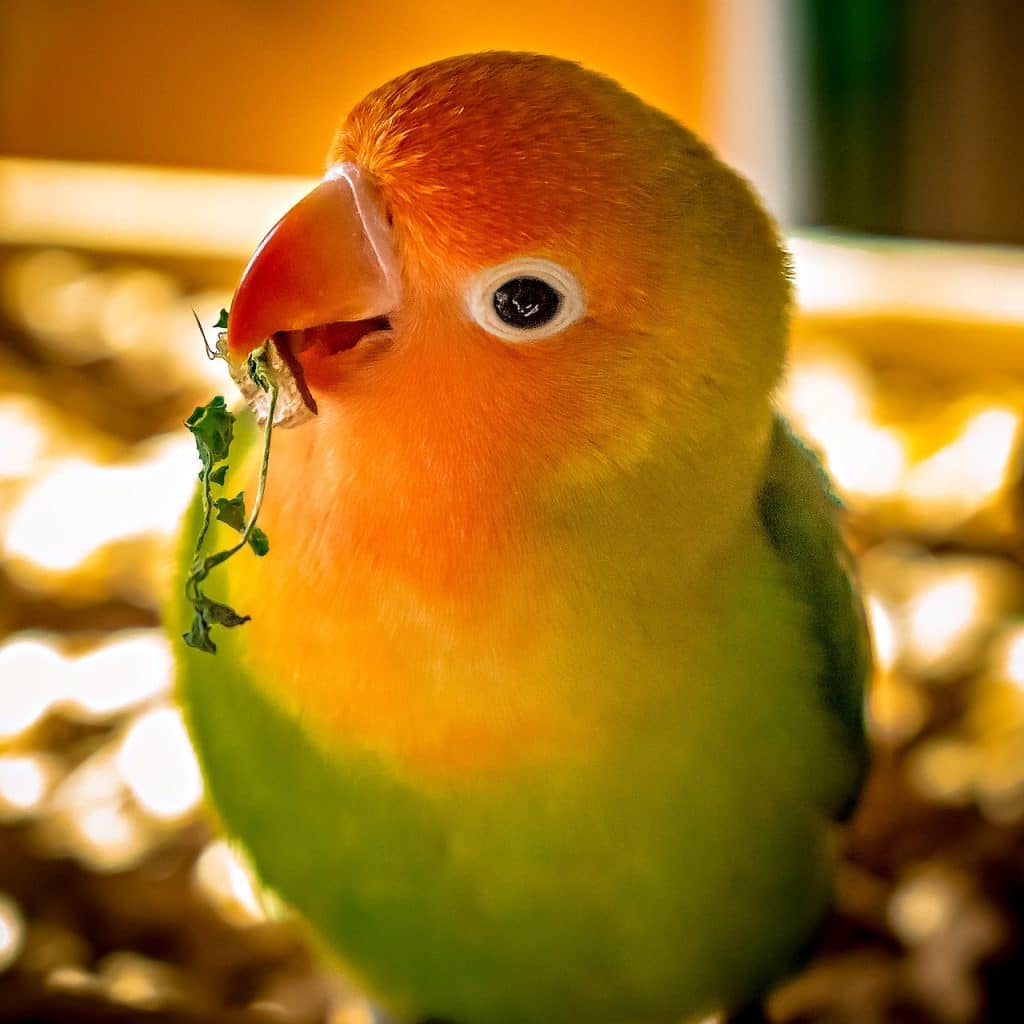
Sometimes, Nyasa or Lilian’s Lovebirds can be found in captivity. Because they are difficult to breed, many keep them as collectors or breeders. They are at risk of disappearing from the wild. Because they are so rare, they are among the least-studied lovebird species.
Appearance
The Nyasa Lovebird looks very similar to Fischer’s Lovebird but has gentler colors. Their frontal features and the top of their heads are a rosy or orange color. This turns into a light orange, then yellow as they move down their necks and onto their chest. Their body is bright green with a blue tint on their wings. Their black eyes have a white ring and their beak is bright orange.
Habitat
They have a larger native area, but smaller and less common flocks. They are found in Malawi, Mozambique, and Tanzania as well as Zambia, Zimbabwe, Zambia, and Tanzania.
Size
They measure a staggering 5.4 inches tall from their heads to their tails. They weigh between 1-1.3 ounces and are lighter than other species.
5. Black-Cheeked Lovebirds (Agapornis nigrigenis)
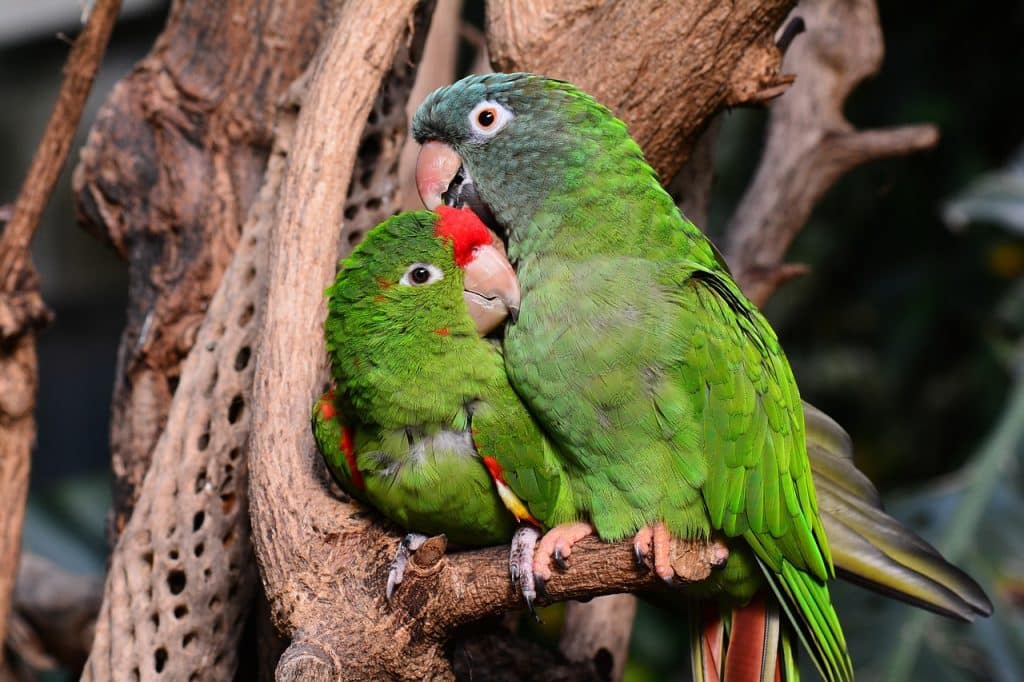
The Black-Cheeked Lovebird should not be confused with Black-Masked Lovebird. They were originally thought to be a subspecies of the Nyasa Lovebird, but they have been identified as an individual species.
Appearance
This bird is primarily covered with dark green plumage on its wings and lime green underside. The plumage fades to a light brown on the chest and then becomes an orange. Their head is dark brown, with white circles around their eyes. Their beaks are bright red.
Habitat
Black-Cheeked Lovebirds can be found in southwestern Zambia. As they migrate to water sources, some of these birds have been seen in Botswana, Namibia, and Zimbabwe.
Size
They are approximately 5.5 inches long and weigh about 1.44 ounces at their largest.
Similar Read: How to read lovebird body language (with pictures)
6. Black-Winged Abyssinian Lovebird (Agapornis Taranta)
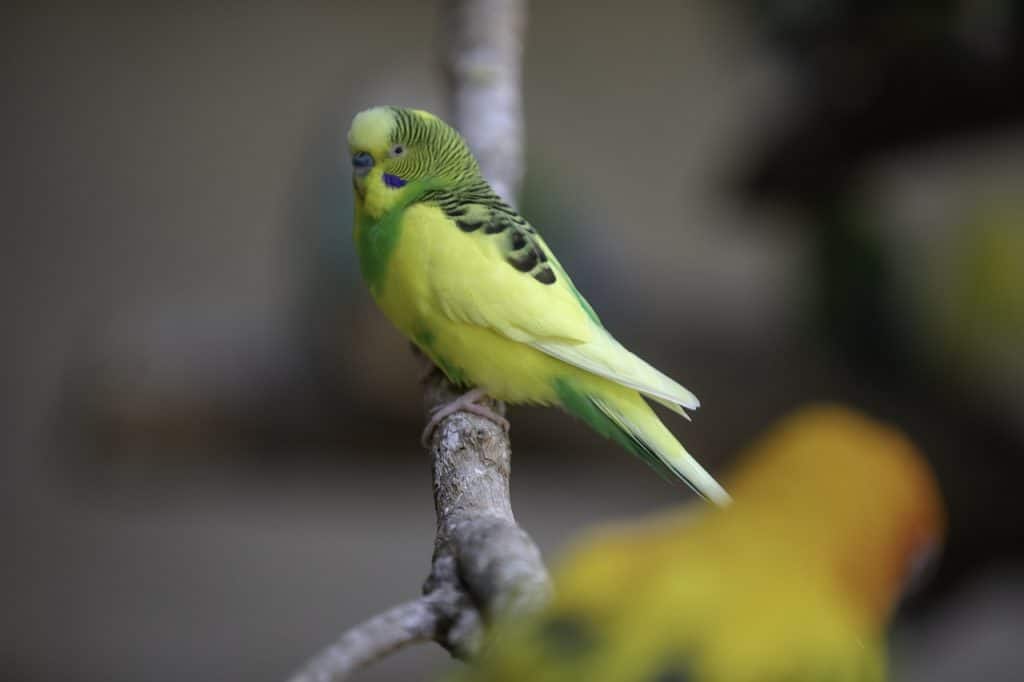
The Abyssinian lovebird is quite different from the other species. Although they are not common, they have gained some popularity as pets in recent years.
Appearance
These birds have bright red eyes and a beak. They are bright shades of green from the top of the head to the bottom. Their black underwing is the only exception. Females can be completely green with no red or black on their bodies.
Habitat
The Abyssinian lovebirds are found in the mountains of Ethiopia and Eritrea.
Size
These birds are typically larger than other lovebird species. They measure 6-7 inches in length and average 1.7 ounces.
7. Lovebirds of Madagascar and Grey-Headed (Agapornis Cana)
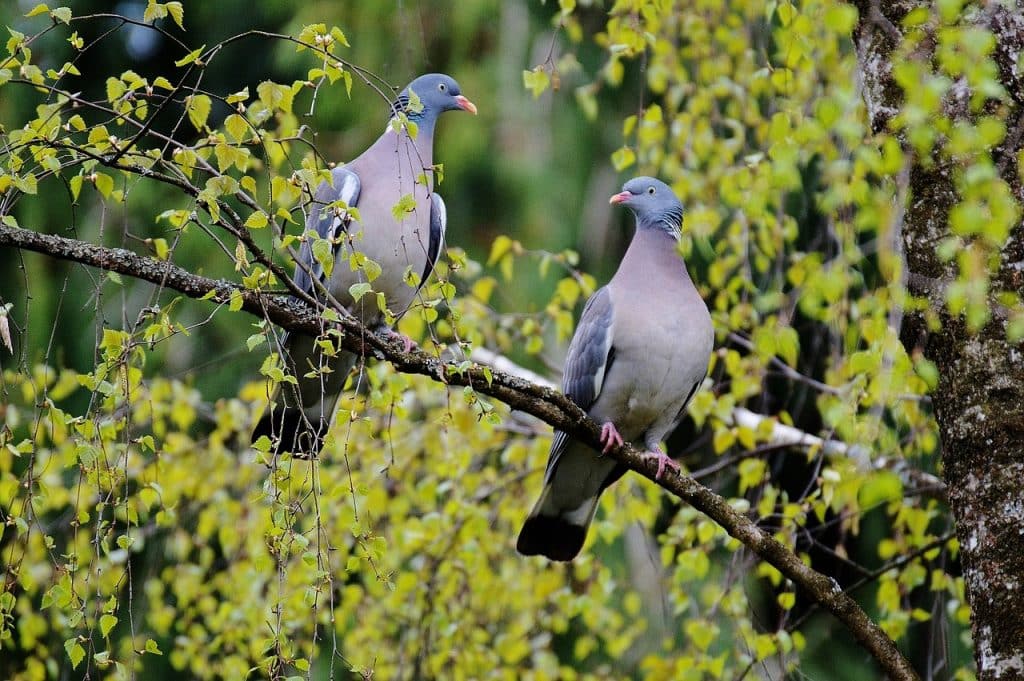
The Madagascar Lovebird, a native of Madagascar, can also be found on several other islands. They are currently not kept in captivity.
Appearance
This lovebird species has different color patterns for males and females. The females have completely green plumage, with some darker hues on their wings and back. Sometimes, it’s paler on their chests.
The entire body of males is covered in pale grey, almost like they are off-white.
Habitat
They are a native species of Madagascar birds and they live in a rainforest environment. They are also found on other islands.
Size
Madagascar Lovebirds are among the smallest lovebird species. They measure just 5 inches in length and weigh 1 to 1.25 ounces.
8. Red-Faced Lovebirds – Agapornis Pullaria
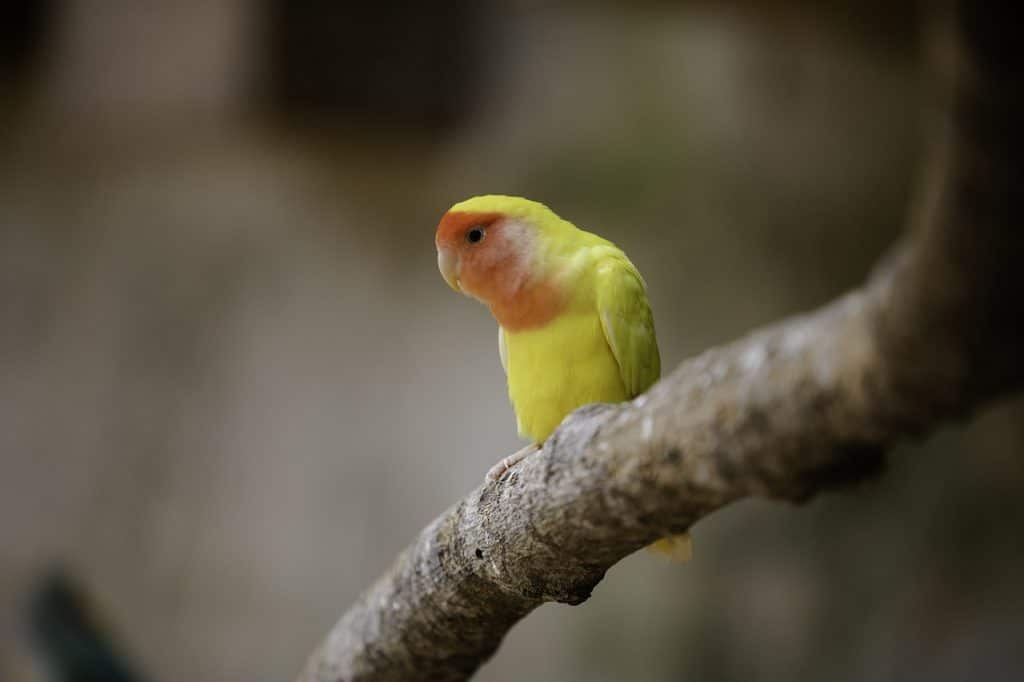
Red-faced Lovebirds look beautiful and have a charming demeanors. Many attempts have been made to keep them captive, but all have failed. Their needs are unique and can only be met by their natural environment.
Appearance
Red-faced Lovebirds display stunning green plumage on their bodies, tails, and necks. The only difference between them is on their foreheads, beaks, and frontal areas. This color is usually a peachy orange.
Habitat
Red-Faced Lovebirds are the most widespread in their native habitat. They are found in all the African tropical rainforests that lie along the Equator. They are found in Uganda, Sierra Leone, and Angola.
Size
When they reach full maturity they are approximately 6 inches in length and weigh about 1.5 ounces.
9. Black-Collared Swindern’s Lovebird
Another rare species is the Black-Collared Lovebird. Because they require native figs for their diet, they are not kept in captivity. They are shy of other creatures and can be seen high up in the trees where they call home.
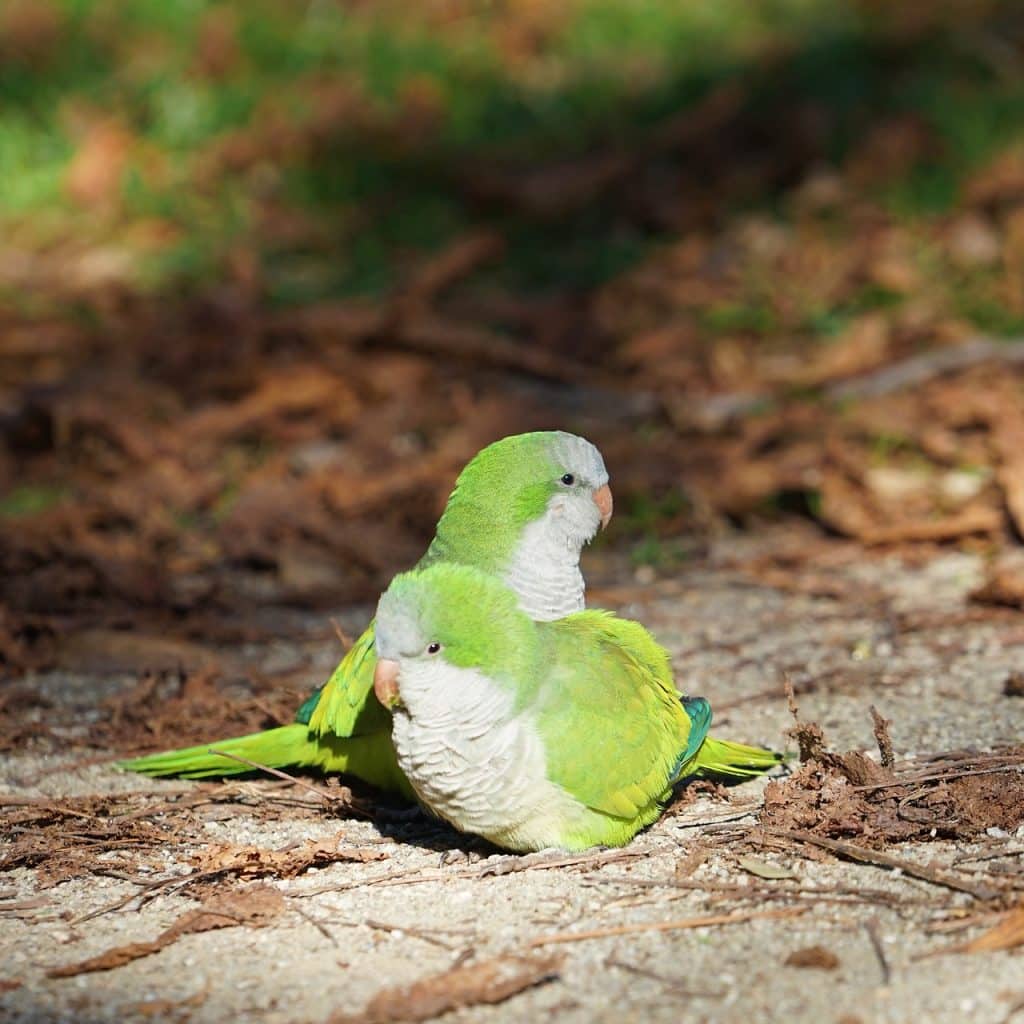
Appearance
They have very few markings on their bodies as they are mostly covered in green plumage. They also have a distinct black collar at the back of their neck.
Habitat
They can also call their home on a wide range of land. These include the forests of Africa, which are similar to the species mentioned above. They can be found in Cameroon and Cote d’Ivoire as well as Equatorial Guinea, Gabon and Ghana.
Size
This species is a good choice for lovebirds. It measures approximately 5 inches from head to tail and weighs around 1.4 ounces.
How many different kinds of lovebirds are there?
Lower classes / Lovebirds
What exactly is an opaline lovebird?
The Opaline African LoveBird is a mutation characterized by an African LoveBird’s facial mask expanding entirely to cover from head to shoulders (full hood). The rump will be the same color as the body, and the tail tips will be the same color as the hood. Opaline is a sex-linked gene.
What exactly is a Parblue lovebird?
Summary. Description. English: The lovebird par blue mutant gene is derived from the blue series gene, which does not completely eradicate psittacine, resulting in yellow feathers on the head and face. Parblue genes can also be produced from recessive genes known as blue possible parable.
What exactly is Euwing?
Euwing is an incomplete dominant mutation, which implies that there is no split; to produce wings in offspring, one of the parents must have a visible euwing, either male or female. Euwings are classified as SF (single factor) or DF (double factor) because it is an incomplete dominant mutation.
Which lovebird color is best?
Top 5 Colors of Lovebirds in the World: The Peach-Faced Lovebirds. Lovebirds by Fischer. Lovebirds with Black Masks. Lovebirds in violet. Cinnamon and Orange-Faced Lovebirds from Australia.
Pink lovebirds are they real?
The Rosy-faced Lovebird (Agapornis roseicollis) is a tiny, brightly colored parrot that is popular as a caged bird in the United States and internationally. Feral flocks of this species have been documented breeding in Phoenix-area residential communities since at least the mid-1980s.
Can you train lovebirds to communicate?
Some lovebirds will be reasonably easy to train, while others may steadfastly refuse to generate any speech at all. Among the factors that might impact your lovebird’s capacity to learn to talk are: Age. A juvenile lovebird will be far more eager to learn everything new, including how to speak.
Do lovebirds require baths?
Feeding and care. Most lovebirds like a bath, which may be given in a flat earthenware dish or sprayed with a gentle mist of lukewarm water. If you use a bathing dish, the birds will sit on the edge, dip their heads and upper bodies in the water, and beat their wings.
Is it necessary for lovebirds to be exposed to direct sunlight?
Natural sunshine is required by birds for vitamin D generation, hormone balance, and organ, skin, and feather health.
What is the most unusual lovebird?
Rare Lovebird Species (also known as “the rares”) Lilian’s Lovebirds, also known as Nyasa Lovebirds (Agapornis lilianae) Lovebirds from Abyssinia (Agapornis taranta) The Black-cheeked Lovebirds (Agapornis nigrigenis) Lovebirds in Black Collars (Agapornis Swindernia) Grey-headed Lovebirds or Madagascar Lovebirds (Agapornis cana)